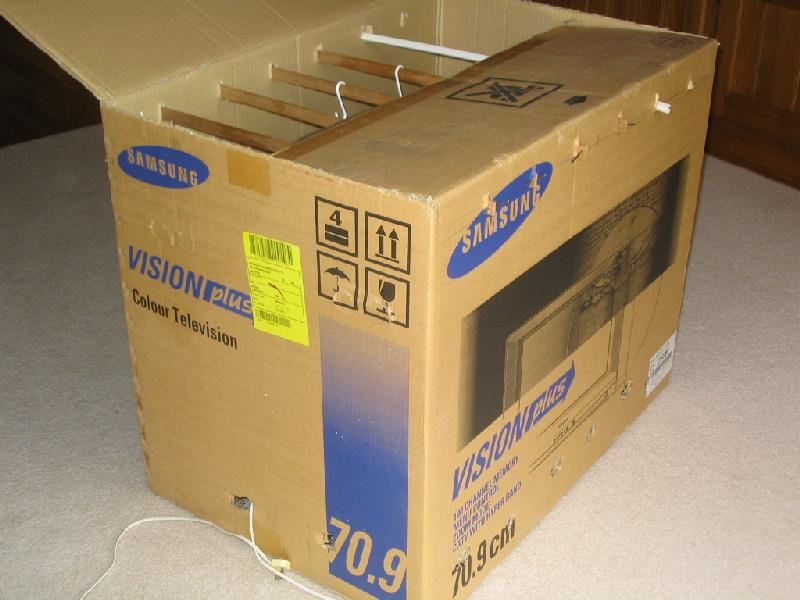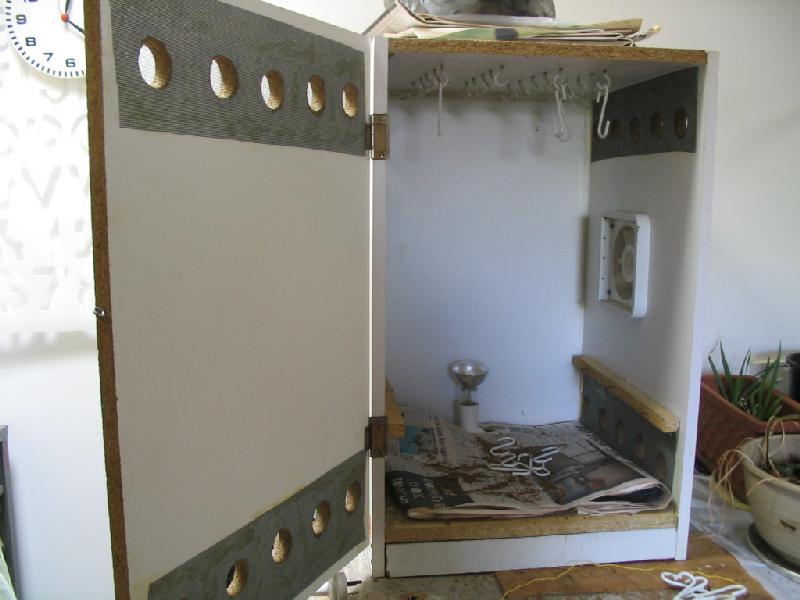| Most household (indoor) biltong-makers work on the principle of convection, with an electric light globe creating perfect conditions for drying the meat within 3 to 5 days. Whilst it is possible to purchase commercially produced biltong-makers for home use, very effective biltong-makers can be built from the most basic components. A biltong-maker will typically consist of a cardboard box with a loose-bottomed end into which a 40-watt or 60-watt light-bulb is fitted. Galvanised steel or even wooden (dowel) rods are fitted into notches along the top of the box. The box should also have some holes along the bottom and top to allow air circulation.
More conventional driers can be constructed from wood or even metal but the same pronciples apply.
The following are some examples of commercial and home-made biltong-makers (click on the thumb-nail picture to see an enlarged picture, use the BACK button of your browser to return to this page):

| HOME PROTOTYPE
Realising that all I needed was a "drying space" I punched
holes along the top and bottom of the sides of this old TV carton.
Dowel rods through the top provided more than enough meat hanging
room and a light inside the box (note electric cord) provided the
convection. Completed with a few sheets of newspaper on the floor
of the carton..
|
|
ANOTHER HOME-MADE
DRIER
This is a "more professional" home-made drier. It too
has ventilation holes along the top and bottom and also uses a
light-bulb to drive the convection. A fan provides forced convection
which makes this type of drier ideal for faster production of
biltong or alternatively a drier product.
| 
|
Back to top of page or back to
main page
| 
